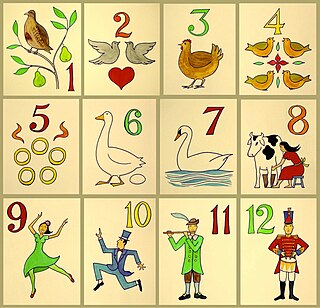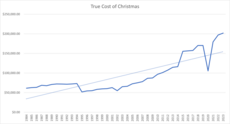
The economy of Jersey is a highly developed social market economy. It is largely driven by international financial services and legal services, which accounted for 39.5% of total GVA in 2019, a 4% increase on 2018. Jersey is considered to be an offshore financial centre. Jersey has the preconditions to be a microstate, but it is a self-governing Crown dependency of the UK. It is considered to be a corporate tax haven by many organisations.

A partridge is a medium-sized galliform bird in any of several genera, with a wide native distribution throughout parts of Europe, Asia and Africa. Several species have been introduced to the Americas. They are sometimes grouped in the Perdicinae subfamily of the Phasianidae. However, molecular research suggests that partridges are not a distinct taxon within the family Phasianidae, but that some species are closer to the pheasants, while others are closer to the junglefowl.
Purchasing power parity (PPP) is a measure of the price of specific goods in different countries and is used to compare the absolute purchasing power of the countries' currencies. PPP is effectively the ratio of the price of a market basket at one location divided by the price of the basket of goods at a different location. The PPP inflation and exchange rate may differ from the market exchange rate because of tariffs, and other transaction costs.

The European turtle dove is a threatened or vulnerable member of the bird family Columbidae, the doves and pigeons. It breeds over a wide area of the south western Palearctic including north Africa but migrates to northern sub-Saharan Africa to winter.

A consumer price index (CPI) is a price index, the price of a weighted average market basket of consumer goods and services purchased by households. Changes in measured CPI track changes in prices over time. The CPI is calculated by using a representative basket of goods and services. The basket is updated periodically to reflect changes in consumer spending habits. The prices of the goods and services in the basket are collected monthly from a sample of retail and service establishments. The prices are then adjusted for changes in quality or features. Changes in the CPI can be used to track inflation over time and to compare inflation rates between different countries. The CPI is not a perfect measure of inflation or the cost of living, but it is a useful tool for tracking these economic indicators.

The Big Mac Index is a price index published since 1986 by The Economist as an informal way of measuring the purchasing power parity (PPP) between two currencies and providing a test of the extent to which market exchange rates result in goods costing the same in different countries. It "seeks to make exchange-rate theory a bit more digestible." The index compares the relative price worldwide to purchase the Big Mac, a hamburger sold at McDonald's restaurants.

A milkmaid, milk maid, milkwoman, dairymaid, or dairywoman is a girl or woman who milks cows. She also uses the milk to prepare dairy products such as cream, butter, and cheese. Many large houses employ milkmaids instead of having other staff do the work. The term milkmaid is not the female equivalent of milkman in the sense of one who delivers milk to the consumer; it is the female equivalent of milkman in the sense of cowman or dairyman.
Little Christmas, also known as Old Christmas, Green Christmas, or Twelfth Night, is one of the traditional names among Irish Christians and Amish Christians for 6 January, which is also known more widely as the Feast of the Epiphany, celebrated after the conclusion of the twelve days of Christmastide. It is the traditional end of the Christmas season and until 2013 was the last day of the Christmas holidays for both primary and secondary schools in Ireland.

Cost of living is the cost of maintaining a certain standard of living. Changes in the cost of living over time can be operationalized in a cost-of-living index. Cost of living calculations are also used to compare the cost of maintaining a certain standard of living in different geographic areas. Differences in cost of living between locations can be measured in terms of purchasing power parity rates. A sharp rise in the cost of living can trigger a cost of living crisis where purchasing power is lost and the previous lifestyle is no longer affordable.

A cumulative song is a song with a simple verse structure modified by progressive addition so that each verse is longer than the verse before. Cumulative songs are popular for group singing, in part because they require relatively little memorization of lyrics, and because remembering the previous verse to concatenate it to form the current verse can become a kind of game.
Rip-off Britain is an expression used by some to refer to the phenomenon in which some products and services cost significantly more in the United Kingdom than in other countries, especially member states of the European Union and the United States, than a basic currency conversion would permit.

QuickChek is a chain of convenience stores based in Whitehouse Station, New Jersey with 153 stores in New Jersey and New York. The first store opened in Dunellen, New Jersey in 1967, and has since then grown into a chain. Several stores include pharmacies, gas stations, and liquor departments.

The PNC Financial Services Group, Inc. is an American bank holding company and financial services corporation based in Pittsburgh, Pennsylvania. Its banking subsidiary, PNC Bank, operates in 27 states and the District of Columbia, with 2,629 branches and 9,523 ATMs. PNC Bank is on the list of largest banks in the United States by assets and is one of the largest banks by number of branches, deposits, and number of ATMs.
The law of one price (LOOP) states that in the absence of trade frictions, and under conditions of free competition and price flexibility, identical goods sold in different locations must sell for the same price when prices are expressed in a common currency. This law is derived from the assumption of the inevitable elimination of all arbitrage.

"The Twelve Days of Christmas" is an English Christmas carol. A classic example of a cumulative song, the lyrics detail a series of increasingly numerous gifts given to the speaker by their "true love" on each of the twelve days of Christmas. The carol, whose words were first published in England in the late eighteenth century, has a Roud Folk Song Index number of 68. A large number of different melodies have been associated with the song, of which the best known is derived from a 1909 arrangement of a traditional folk melody by English composer Frederic Austin.

The 12 Days of Brumalia was an internet event presented by The Residents in 2004 through their website residents.com that resulted in an album of the same name. For 12 days, starting on December 25, a new song was posted on residents.com web site along with an illustration and a quote. On the 13th day, The Residents presented the epic musical work, The Feast of Epiphany.

Shell Energy Stadium is an American multi-purpose stadium located in Houston, Texas that is home to the Houston Dynamo, a Major League Soccer club and the Houston Dash of the National Women's Soccer League.The stadium is the result of combined commitments of $35.5 million from the city of Houston and $60 million from the Houston Dynamo. Harris County agreed to pay for half of the land in exchange for the ability to jointly own the stadium after its completion date in May 2012. The naming rights to the stadium were formerly held by BBVA USA; the name was changed to that of PNC Financial Services due to BBVA's acquisition by PNC. The stadium's naming rights have been owned by Shell Energy since January 17, 2023.

12 Dates of Christmas is a television film starring Amy Smart and Mark-Paul Gosselaar. It premiered on ABC Family on December 11, 2011 in their 25 Days of Christmas programming block. It is directed by James Hayman. The film depicts Smart as Kate, a woman insensitive to the feelings of others and who wants to return to a past relationship, and Gosselaar as Miles, a widower who hopes to find a new romantic partner. After Kate blows off her blind date with Miles on Christmas Eve, she discovers she is stuck in a time-loop, giving her 12 chances to mature, improve her relationships with others, and find romance with Miles.

The economics of Christmas are significant because Christmas is typically a high-volume selling season for goods suppliers around the world. Sales increase dramatically as people purchase gifts, decorations, and supplies to celebrate. In the U.S., the "Christmas shopping season" starts as early as October. In Canada, merchants begin advertising campaigns just before Halloween, and step up their marketing following Remembrance Day on 11 November. In the UK and Ireland, the Christmas shopping season starts from mid-November, around the time when high street Christmas lights are turned on. In the United States, it has been calculated that about one fifth of retail sales to one quarter of all personal spending takes place during the Christmas/holiday shopping season. Figures from the U.S. Census Bureau reveal that expenditure in department stores nationwide rose from $20.8 billion in November 2004 to $31.9 billion in December 2004, an increase of 54 percent. In other sectors, the pre-Christmas increase in spending was even greater, due to a November through December buying surge of 100% in bookstores and 170% in jewelry stores. In the same year employment in American retail stores rose from 1.6 million to 1.8 million in the two months leading up to Christmas. This means that while consumers might spend more during this season, they also are given increased employment opportunities as sales rise to meet the increased demand.

A Christmas gift or Christmas present is a gift given in celebration of Christmas. Christmas gifts are often exchanged on Christmas Eve, Christmas Day itself or on the last day of the twelve-day Christmas season, Twelfth Night. The practice of giving gifts during Christmastide, according to Christian tradition, is symbolic of the presentation of the gifts by the Three Wise Men to the infant Jesus.
















